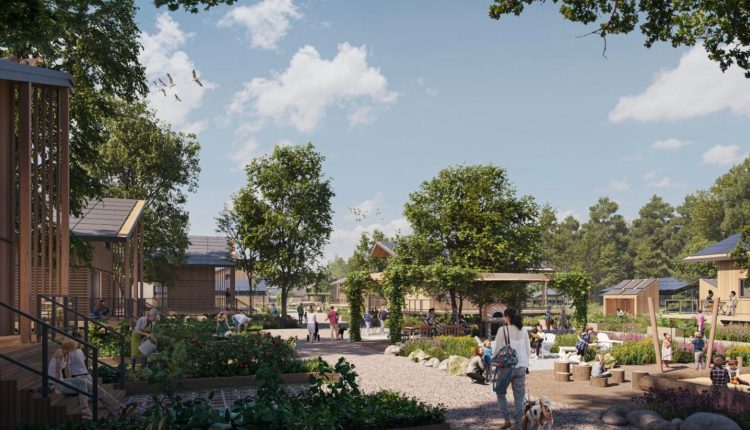Community farming, farm-to-table, farmers’ markets, clean labeling. These terms are all increasingly popular additions to the modern American vernacular.
Their emergence has had much to do with the growing preference for fresh foods unsullied by overprocessing and the addition of unhealthy levels of sodium and sugar, not to mention multisyllabic ingredients more befitting a chemistry lab than a homemaker’s kitchen.
While many are seeking a reconnection between food preparation and its original natural sources, others are finding it’s also possible for rural neighborhoods to forge a firmer and more direct connection to nature, locally grown food sources and active outdoor lifestyles. In Ontario, Canada, a trio of residential communities are unveiling designs that beckon newcomers — many of them having grown weary of big-city life — back to the land that sustained countless earlier generations of rural families. Moreover, they’re doing so in serious, purposeful and consequential ways.
CABN, Augusta Township
B+H Architects and Canadian housing technology company CABN are the driving forces behind a new 67-unit, off-grid net-zero community in Augusta Township, one hour from Toronto. The architects allowed nature to dictate the design process and pinpoint where homes and amenities would be placed. Old growth forests and wetlands remain untouched and homes are built solely on land already impacted by agriculture. The water, food and compost harvested is fed back into the community’s own self-sufficient system.
“We are moving beyond the long-standing separation of ’human’ versus ‘natural’ systems and instead recognizing that humans are a core part of our natural environment,” says Jamie Miller, B+H director of biomimicry. “This artificial distinction has had profound ramifications for our conventional development, and with the Augusta Township we planned and designed this site so that human activity positively contributes to the ecological function of the place overall.”
Thornbury Acres
This is a 152-acre residential farm cooperative in the town of Blue Mountains, Ont., about two hours north of Toronto. Developer Castlepoint Numa, a company intent on returning the area to its agricultural roots, offers a simple premise.
Thornbury Acres will give families a fulfilling, sustainable farm life, along with resources, land and expertise, while maintaining the region’s history-steeped farm heritage. The development offers 37 homesteads, with 800-square-foot plots for each household to own and manage. They also share financial responsibility for the maintenance and production of Thornbury Acres’ shared assets, among them a community barn and additional crops.
“Now more than ever, people are educating themselves and making informed decisions about where their food comes from,” reports Harley Valentine, partner with Castlepoint Numa. “We are taking this one step further, giving families the opportunity to become stewards of the land and take control of their food consumption cycle through a well-supported cooperative lifestyle. [It’s] a blueprint setting a precedent for human-scale regenerative agriculture in rural areas that move away from large commercial till farming.”
Craigleith Ridge
Also in Blue Mountains, Craigleith Ridge is a new townhome development set between Georgian Bay and the Blue Mountains, placing residents a brief walk from both Blue Mountain Village and the bay beach. The creation of SvN Architects + Planners and Parkbridge Lifestyle Communities, Craigleith Ridge is a development defined by protected archeological sites and dramatic topography, with natural watercourses slicing through the land.
Environmental protection areas have preserved both wildlife and a large number of mature butternut trees along the site-crossing Nipissing Ridge. Archaeological zones were researched with the assistance of The Saugeen Ojibway Nation.
“Each unit will be unique within the Craigleith and Blue Mountain communities and reinforce the broader objectives of the development to connect the community to nature,” says Drew Sinclair, partner with SvN Architects + Planners. “Our design even intends to celebrate the archaeological zones through both the diligent protection of this cultural heritage as well as through interpretive signage and other educational design features. This ensures we design a space that pays homage to the land and welcomes new community members to the Town of Blue Mountain.”
Read the full article here

